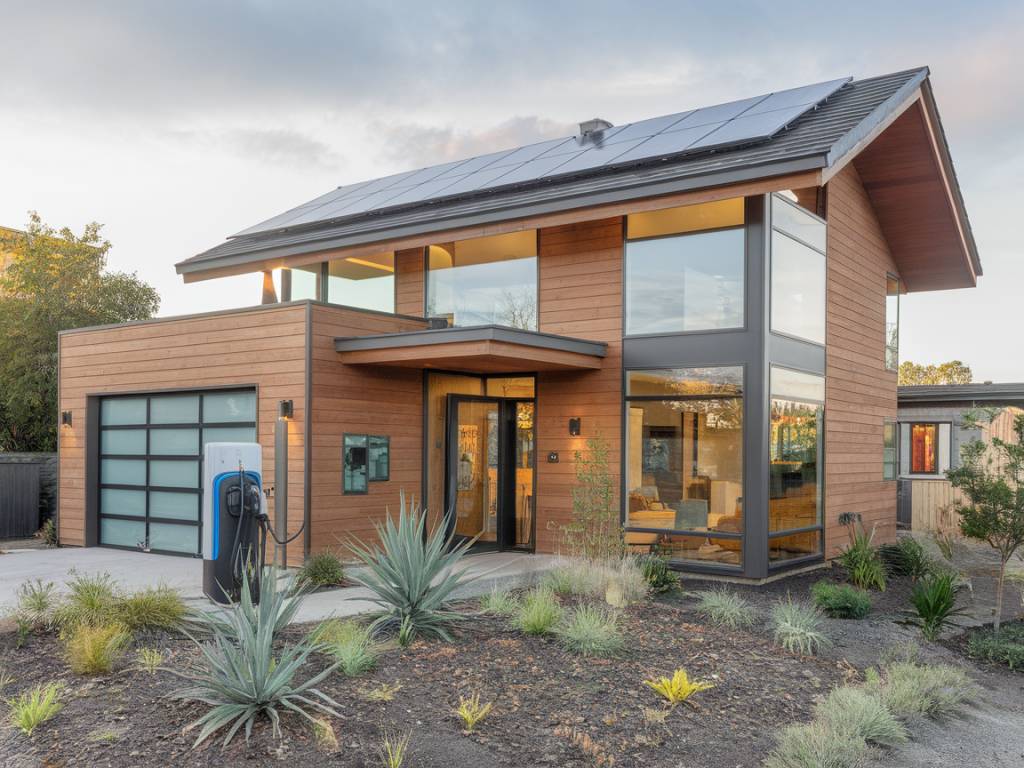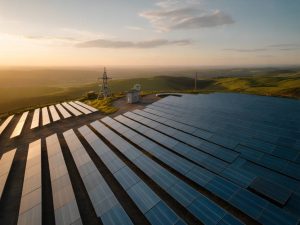Why Energy Efficiency Matters
Imagine your home as a living organism. It breathes, uses energy, and adapts to changes. Making your home energy-efficient is much like giving it a healthy diet and exercise routine—not only does it reduce your utility bills, but it also minimizes your environmental footprint. Did you know that residential buildings account for about 20% of global CO₂ emissions? By optimizing your home’s energy usage, you’re contributing directly to a cleaner planet. Let’s dive into some actionable steps to achieve this.
Insulating Your Home Like a Pro
Have you ever left a window slightly open on a cold winter’s day, only to realize hours later why your heating system was working overtime? This is a common problem, but insulation can help. Proper insulation in walls, roofs, and floors can prevent up to 80% of heat loss in your home.
Start by checking for drafts around doors and windows. Use weatherstripping or caulking to seal gaps. For older homes, consider upgrading to double or triple-glazed windows—they may sound fancy, but they can save you a fortune in the long run.
And don’t forget your attic! Heat rises, and an uninsulated attic can be one of the biggest culprits of energy loss. Installing high-quality insulation like fiberglass or spray foam can make a world of difference.
Optimize Heating and Cooling Systems
Heating and cooling systems are often the largest energy consumers in a household. But there’s good news: small changes can lead to huge energy savings. For instance, have you ever thought about switching to a programmable thermostat? Set it to adjust temperatures based on your schedule, so you’re not wasting energy while you’re out or sleeping.
If your HVAC system is more than 10-15 years old, it may be time for an upgrade. Modern systems are far more efficient and can reduce energy use by as much as 30%. Plus, regular maintenance such as cleaning filters and ducts ensures your system runs at peak efficiency.
Pro tip: Remember to use ceiling fans! They circulate air effectively, meaning you can raise the thermostat in summer or lower it in winter without sacrificing comfort.
Energy-Efficient Appliances and Lighting
When was the last time you upgraded your appliances? Modern energy-efficient appliances, such as those with ENERGY STAR certifications, consume significantly less electricity. For instance, a newer refrigerator or washer could use up to 40% less energy than their outdated counterparts.
For lighting, switch to LED bulbs. Though they might be slightly more expensive upfront, they use up to 80% less energy and last up to 25 times longer than incandescent bulbs. Think of all the burned-out bulbs you won’t have to replace!
Embrace Renewable Energy
Have you noticed how rooftop solar panels are becoming more widespread? Installing solar panels can dramatically cut your energy bills while making your home greener. Even if solar panels aren’t within reach financially, some utility companies offer renewable energy programs you can enroll in to support clean energy initiatives.
Additionally, if you live in a windy area, small domestic wind turbines could be an interesting alternative. These systems can be integrated into your existing power supply, reducing dependency on grid-provided electricity.
Water Conservation Equals Energy Savings
Wait…does saving water really save energy? Absolutely! Heating water accounts for a significant portion of a household’s energy use. To reduce this, consider installing low-flow showerheads and faucets, and fix any dripping taps immediately—they can waste gallons of hot water each week.
For your water heater, lowering the thermostat to around 120°F (49°C) is another effective energy-saving move. And if you’re ready for a bigger investment, switching to a tankless water heater can save energy by only heating water on demand instead of maintaining a large reservoir.
Smart Home Technology: Your Energy-Efficiency Ally
Let’s be honest: we all love gadgets. But what if these gadgets could also save you money? Smart home technology is the future of energy-efficient living. Devices like smart thermostats, energy monitoring plugs, and automated blinds help you control your energy use with ease.
For instance, have you ever left lights on while rushing out the door? A smart lighting system can detect when someone leaves a room and turn off the lights automatically. Similarly, smart plugs allow you to monitor and control the power consumption of individual devices through your smartphone.
Adopt Energy-Efficient Habits
Technology alone isn’t enough—you have to pair it with smarter habits. Turn off lights when leaving a room (maybe pretend you’re the energy police for fun), unplug devices that aren’t in use, and try air-drying clothes instead of using the dryer.
Simple habits like washing clothes in cold water or filling the dishwasher to capacity before running it can also make a difference. Small, consistent changes can add up to substantial energy savings over time.
Create a Greener Outdoor Space
Energy efficiency isn’t limited to the walls of your home—it extends to your outdoor space too. Planting trees or shrubs strategically around your home can provide shade in the summer and act as windbreaks in winter, naturally reducing heating and cooling costs.
If you have a garden, why not install solar-powered outdoor lighting? These lights charge during the day and provide illumination at night, cutting the need for grid electricity. It’s a win-win situation: lower bills and a beautiful, eco-friendly space.
The Bigger Picture: Your Role in Climate Action
Remember, every step you take toward energy efficiency isn’t just about trimming off a few dollars from your utility bills. It’s a statement—a declaration of your commitment to a sustainable future. What if everyone made small changes in their homes? Together, our collective efforts could significantly curb global energy demand, reduce emissions, and move us closer to a cleaner, greener planet.
So, are you ready to make your home truly energy-efficient? Start small, act steadily, and watch the transformation unfold—not only in your home but in the world around you.






More Stories
L’impact environnemental caché de l’intelligence artificielle : vers une IA plus sobre en énergie
L’essor des communautés énergétiques locales : vers une nouvelle gouvernance citoyenne de l’énergie
Powering Data Centers Sustainably: The Role of Renewable Energy in the Digital Age